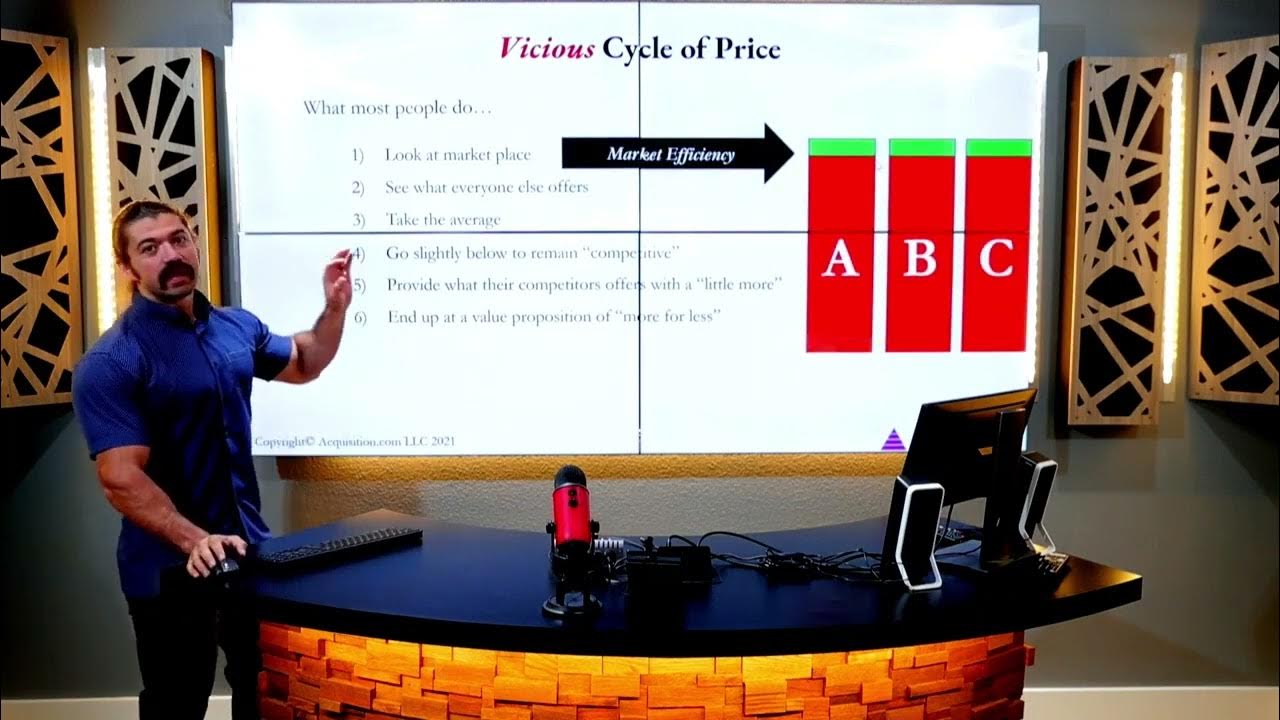PRICING AND VALUE COMMUNICATION 2021
Summary
TLDRThis video explains the relationship between pricing and consumer value, highlighting how price influences customer expectations. It covers the role of value communication in protecting a brand’s value proposition, improving willingness to pay, and increasing purchase likelihood. The script explores perceived and desired consumer value models, factors for optimal pricing, and the impact of different pricing strategies, such as premium and everyday low pricing. Additionally, it emphasizes the importance of balancing price with perceived quality and the potential risks of poor pricing practices. Overall, the video offers insights into effective pricing strategies for businesses.
Takeaways
- 😀 Price influences customer expectations; high prices suggest high quality, while low prices imply lower quality.
- 😀 Price is not just an amount of money, but a representation of the total value exchanged for a product or service.
- 😀 Consumer value is defined as the perceived worth of a product or service compared to its alternatives.
- 😀 Value and price communication serves three main roles: protecting value propositions, improving willingness to pay, and increasing purchase likelihood.
- 😀 Customers may not understand the value of a product due to new features, lack of knowledge on usage, or unmet needs.
- 😀 There are two main types of consumer value models: Perceived Consumer Value and Desired Customer Value.
- 😀 Perceived Consumer Value includes both product-oriented and relationship-oriented methods for assessing value.
- 😀 Desired Customer Value focuses on understanding customer desires and needs when purchasing or using a product.
- 😀 Good pricing strategies are value-oriented (reflecting consumer value) and proactive (anticipating market and competitor changes).
- 😀 Poor pricing decisions, such as failing to optimize prices or using uniform strategies across different product lines, can harm a business.
- 😀 A strong company reputation is built through optimal pricing, value bundling, and strategic discounting, all of which affect brand equity.
Q & A
How does the price of a product affect customer expectations?
-When a product is priced high, customers tend to expect high quality and durability. Conversely, a low price may lead customers to perceive the product as lower in quality.
What is the definition of price in its most basic form?
-Price refers to the amount of money a customer pays for a product or service, but it also represents the total value that the consumer gives up in exchange for the benefits of owning or using that product or service.
What does consumer value mean?
-Consumer value is the measure of a product or service's worth, which is compared to its alternatives. It determines whether the customer feels they received enough value for the price they paid.
What are the three key roles of value and price communication?
-1) Protecting the value proposition from competition, 2) Improving the willingness to pay, and 3) Increasing the likelihood of purchase as customers move through their buying process.
What are some reasons customers might not understand the value of a product?
-Customers may not understand the value due to unfamiliar features, lack of knowledge on how to use certain features, or uncertainty about how a feature addresses an unmet need.
What is the difference between perceived consumer value and desired consumer value?
-Perceived consumer value is based on the trade-off between benefits and sacrifices, focusing on product performance, while desired consumer value seeks to understand the needs, desires, and values customers hope to fulfill through the product or service.
What are the two methods used to determine perceived consumer value?
-1) Product-oriented methods, which focus on the trade-off between product quality and price, and 2) Relationship-oriented methods, where the value is enhanced through the customer’s ongoing relationship with the brand.
What are the key characteristics of good pricing on consumer value?
-Good pricing is value-oriented, meaning the price should reflect the value the consumer places on the product, and proactive, allowing businesses to anticipate changes in the market and adjust their prices accordingly.
What are some examples of poor pricing practices?
-Poor pricing practices include failing to optimize prices, which can lead to a perception of poor quality if priced too low, and using the same pricing strategies across different product lines, which ignores varying customer values.
What are the three main pricing strategies to increase brand reputation?
-1) Discounted pricing, which attracts more customers but may harm brand equity, 2) Premium pricing, which sets high prices to reflect quality and rarity, and 3) Everyday low pricing, which ensures a consistent, low-cost offering that can build strong brand equity.
Outlines

Esta sección está disponible solo para usuarios con suscripción. Por favor, mejora tu plan para acceder a esta parte.
Mejorar ahoraMindmap

Esta sección está disponible solo para usuarios con suscripción. Por favor, mejora tu plan para acceder a esta parte.
Mejorar ahoraKeywords

Esta sección está disponible solo para usuarios con suscripción. Por favor, mejora tu plan para acceder a esta parte.
Mejorar ahoraHighlights

Esta sección está disponible solo para usuarios con suscripción. Por favor, mejora tu plan para acceder a esta parte.
Mejorar ahoraTranscripts

Esta sección está disponible solo para usuarios con suscripción. Por favor, mejora tu plan para acceder a esta parte.
Mejorar ahoraVer Más Videos Relacionados

Bab 11: Strategi Produk - Manajemen Pemasaran

04 How to estimate Economic Value PRICING STRATEGY

#03 - Charge What It's Worth - Pricing Alex Hormozi

Introduction to Pricing Strategy

What is Pricing in marketing? | Pricing strategies

The Rise of E-commerce: How Online Shopping is Disrupting Traditional Retail
5.0 / 5 (0 votes)
